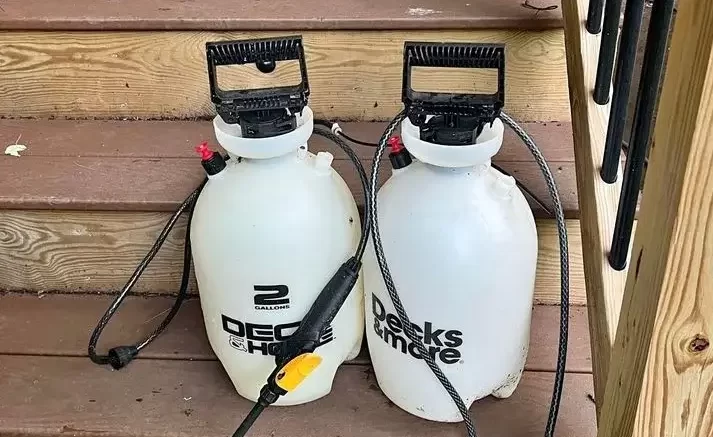Sprays are a good weapon in your arsenal to exterminate Bed bugs by yourself.
Here we will talk about the kind of products available on the market, and how to use Sprays for bed bugs. If you want to know more, read on !
Different types of Bed bugs Sprays
There are two types of insecticide sprays for bed bugs: Contact killers and Residual killers.
Contact killer insecticide
Contact Killers (or non-residual insecticide) as the name suggests, kill on contact bed bugs. They are effective when sprayed directly on the bugs, however usually they are not effective for a longer period of time compared to residual insecticide.
Here is described by the EPA the different kinds of chemicals used in sprays as well as their effects. You will often find Pyrethroid in Contact killers.
Residual insecticide
Residual insecticide indeed remains effective for a longer period of time, allowing them to spread the insecticide to other bugs of the colony. So, the strategy using those two types of insecticides should differ. As mentioned, you should apply contact insecticide directly on bugs whereas you should apply residual insecticide on places you suspect they are living or places you may be crossing.
They can live up to a year depending on condition without any feeding, and their eggs hatch after several days (up to a week). So, you may think that you are done with them, while the new generation is propagating. Residual insecticide as they have a long-term effect will help you get rid of several generations of bugs.
You should reapply residual killer spray every few weeks to maximize results. Rely on the label to know how long you should wait before the first and the next application.
Best is to use both residual and contact insecticide in combination to have a short and a long-term strategy in your DIY extermination process.
If you are interested in home remedies to get rid of those pests, you could have a look at our article on Vinegar and Bed bugs.
How to use Sprays for bed bugs
Spray can be contact or residual insecticide. In any case you should not spray everywhere around your home but in strategic areas:
For Contact sprays: Spray directly on visible bed bugs or in a nest. Most often they hide during the day close to their food source – their host. So that is why they reside often in the bed or close to the bed area.
For Residual sprays in places where you suspect bed bugs are hiding or passing by.
Those areas include:
- The box spring, bed frames and bed legs
- The outside of the mattress, only if your spray is designed for mattress use
- Along baseboards
- upholstered furniture close to the bed
9 Steps to use correctly sprays for Bed bugs
- You should avoid spraying in places where you will make skin contact.
- Do not spray too much as the surface should only be a bit humid. A drenched surface would be a waste of product.
- Because they come in liquid form, do not spray on electrical outlets, or cracks and crevices. Instead, you should use bed bug powder such as silica gel dust or diatomaceous earth for those areas.
- After application you should let the spray dry for a few hours. Depending on the type of spray, it will be effective during a specific time range which should be specified on the manufacturer’s instructions. When you spray your mattress, best is to encase it in case Bed bugs are residing inside it, so that they cannot escape from the encasement.
- Repeat application every few days until there are no more signs of infestation.
- You should purchase only insecticide registered with the EPA. To ensure you have tools that are safe and effective.
- Always follow the manufacturer’s instructions and labels to make sure you use the product the right way. For example, used insecticide should be labeled for indoor use. You should rely on the label of the product that you are using.
- You should ventilate your room after application of insecticide.
- As some bed bugs have become resistant to some insecticide sprays. That is why any insecticide from the store might not do the job.
Now you know how to kill bed bugs with Sprays. The next step is to find the right Spray available on the market for this task, which can be challenging. Check our in-depth Bed bugs Sprays Buying guide to find the best sprays to get rid of bed bugs.

